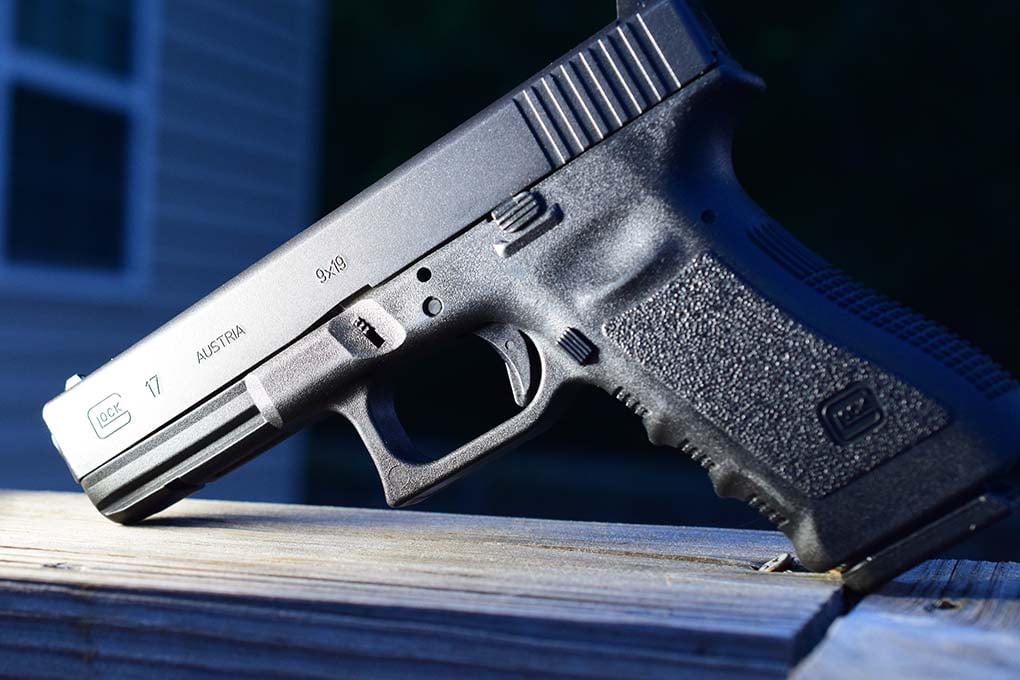When Gaston Glock first introduced his Model 17, the gun world laughed at the prospect of plastic guns made by Mattel. Some 32 years later, Glock has the last laugh, with the majority of police departments in the U.S. adopting Glock’s Polymer G series of pistols or one of its polymer-framed rivals.
Glock was once the king of plastic blasters, but are there better options more than three decades later? Guns.com takes a look at the top five polymer-framed Glock-killers.
Beretta 90-two
When the U.S. military decided to replace aging stocks of 1911 pistols, they did the unthinkable and chose a wonder-nine instead. It was the M16 debacle all over again, except the Beretta 92’s design had already been combat-proven in the Italian Military. Many people still debate this decision, but the 92 was and remains a popular choice among both civilians and military personnel.
However, the Model 92 is somewhat dated. In an effort to update it to the 21st century Beretta introduced the 90-two, a streamlined polymer version of the 92 that holds an additional two rounds. While the military has not adopted the 90-two for service, it represents the evolution of the 92 series of handguns and gives shooters a DA/SA polymer option in a sea of striker-fired handguns.

Don’t let the looks fool you, the Smith & Wesson M&P is a great pistol. (Photo credit: Weapons of War)
Smith & Wesson M&P
What happens when the biggest name in revolvers decides to try and oust the king of plastic fantastics with lessons learned from their first unspectacular entry? The M&P series of handguns.
When Smith decided to oust Glock from the throne of polymer guns, they made a very intelligent decision not to attack Glock’s strong points, like accuracy and reliability. Instead they sought to match Glock’s legendary performance and do something previously unheard of: design a law enforcement/combat weapon around ergonomics. The result? A polymer pistol with three different backstraps that fits a wider variety of shooters than any Glock handgun.
Walther Arms PPQ M2
The Walther P99 is a great handgun and represented a serious threat to Glock’s dominance when unveiled in 1993. Holding 15 rounds of 9mm in an ultra-reliable package with better ergonomics than the G17 wasn’t enough for U.S. law enforcement agencies to adopt the P99. In response, Walther further centered its P99’s design around ergonomics with the PPQ and finally replaced the European paddle-style magazine release with the M2 variant.
Shooters with small hands will appreciate just how slim the grip of the PPQ is, and why Glock hasn’t done a better job with their slim-line series of handguns.
Heckler & Koch USP/P8
The Germans love engineering, but they also love archaic designs. They stuck with the Mauser C96 and P08 for years longer than they should have and waited until 2004 to completely phase out their venerable P38 (though it held the moniker of P1). The Heckler & Koch P8, a modified version of the USP, finally forced them to abandon the aluminum-framed dinosaur.
The USP pistol is the result of Heckler & Koch’s engineering team’s response to the Offensive Handgun Weapon System (OHWS) program requested by the U.S. Special Operations Command (USSOCOM). The USP was subject to conditions that would make an AK-47 nervous and outshines the competition.
It’s no wonder SOCOM adopted the pistol under the MK 23 title.
FNH USA FNX-45 Tactical
If there’s one gun on this list that should have been the U.S. military’s choice to replace the 1911, this is it.
Developed in response to the U.S. Joint Combat Pistol Program, the FNX-45 Tactical has every bell, whistle and badass feature a soldier could dream of.
Unfortunately, the FNX-45 didn’t exist when the U.S. military adopted the M9, otherwise it may have been its next official sidearm. Show me a problem you cannot solve with 15 rounds of suppressed .45 ACP and I’ll show you a reason to call in an airstrike.
GLOCK spelled in all caps
Every gun on this list is superior to a Glock in some way, but the likelihood of them usurping Glock is slim. Not because they aren’t superior designs, but because Glock has an Apple-like hold on the industry. Although Apple wasn’t the first company to build an MP3 player, they were the first to market it to the everyman. Likewise, Glock wasn’t the first company to build a polymer handgun, that distinction goes to HK’s VP70, which predates the G17 by 12 years.
But give credit where credit is due. What makes the Glock so revolutionary is the fool-proof design. It includes no external safeties and it works. If you can pull a trigger, you can shoot a Glock. I suspect that Glock could have stopped innovating after its generation one models and most police agencies would still be using them. If one of the listed pistols is to replace the Glock, it will have to outperform it in every conceivable way. Unfortunately for all these companies, I’m not sure that’ll be economically possible until the advent of energy weapons.
Is Glock, and will always be, king of the polymer pistols? What are your thoughts?
The post Five full-sized polymer handguns that should make Glock nervous appeared first on Guns.com.





